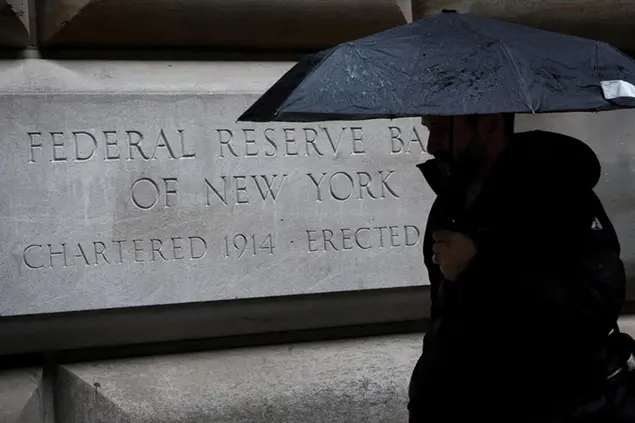PHOTO
As U.S. rate cuts come into view, investors are confronting a new challenge: figuring out whether the Federal Reserve will be able to ease monetary policy at a pace consistent with achieving the hoped-for economic "soft landing" that has helped lift asset prices this year.
Fed Chairman Jerome Powell on Wednesday said "there was a growing sense of confidence" the central bank could cut rates in September if inflation continues to cool, the strongest indication yet that officials are getting ready to ease monetary policy soon.
That signal is far from an all-clear for investors, however. Some market observers have recently questioned whether the Fed has left rates at elevated levels for too long, potentially hurting the chances of pulling off an economic soft landing, where it lowers inflation without badly hurting growth.
Investors on the other side of the spectrum worry that easing monetary policy when the economy is relatively robust could reignite inflation, limiting how much the Fed will ultimately be able to cut rates.
“There are reasons to think the soft landing is still alive … but the risks are two-sided,” said George Catrambone, head of fixed income and trading at DWS. “Soft landings don’t materialize by waiting too long.”
Futures tied to the Fed’s policy rate late Wednesday showed investors pricing in an 87% chance of a September 25 basis-point cut. U.S. stocks held on to sharp gains notched earlier in the day, with the S&P 500 closing up 1.6%.
Yields on two-year Treasuries, which move inversely to prices and reflect rate expectations, dropped about eight basis points to 4.278%, their lowest level in nearly six months. Benchmark 10-year yields shed nearly four points to 4.1%.
TOO LATE?
Most key U.S. data, including employment numbers, show an economy that remains resilient despite interest rates staying at their highest levels in more than two decades for months. The jobless rate has been rising, however, and policymakers have put more focus of late on avoiding the sort of sharp rise in unemployment often associated with high interest rates and slowing inflation.
“You’re seeing that fraying at the edges,” said Peter Baden, chief investment officer at Genoa Asset Management. “Now the question becomes, does a fraying at the edges turn into a full blown slowdown?”
Investors will get an important snapshot of the economy on Friday, when the U.S. reports employment data. Later this month, the Fed's Jackson Hole symposium will give policymakers an opportunity to fine tune their message.
Should cracks in the economy start to form, some investors worry that it would take a comparatively long time for rate cuts to buoy growth, increasing the chance of a recession.
"Now you've got the lag effect because as the Fed sets on an easing cycle, now some of the negative stuff could be baked into the economy," said Jack McIntyre, portfolio manager, global fixed income, at Brandywine Global Investment Management. "Even if the Fed starts in September, it might not be enough to alter the course of the economy going into 2025."
Indeed, some believe the damage to the economy may already be setting in. Former New York Fed chief Bill Dudley called for an immediate rate cut in a Bloomberg op-ed last week. He cited the so-called Sahm Rule, noting that the speed at which a rising jobless rate presages recession is now close to being triggered.
SHALLOW CYCLE?
Others fear a shift to lower rates could spark an inflationary rebound similar to an uptick in consumer prices that alarmed markets earlier this year. That would make it difficult for the Fed to deliver the nearly 75 basis points of cuts markets are pricing for this year, said Hans Mikkelsen, managing director of credit strategy at TD Securities.
"Powell highlighted that last year's inflation data also looked good but then inflation came back," he said.
A shallower-than-expected rate cutting cycle could hobble a market rotation into small cap stocks and other rate cut beneficiaries that took hold earlier this month, said Jack Janasiewicz, lead portfolio strategist at Natixis Investment Managers.
Moreover, this year’s impressive gains in U.S. stocks could mean that the bulk of Fed easing may have already been factored into asset prices, limiting future upside.
The S&P 500 has gained an average of 16.1% between the last rate hike of a prior cycle and the first rate cut of a new one, data from CFRA research showed. Yet the index gained just 4.8% over the 12 months following a rate cut. The S&P 500 is up 16% this year.
Tony Rodriguez, head of fixed Income strategy at Nuveen, believes the 10-year Treasury is likely to stay around 4% for the first half of 2025 while valuations in the equity market “appear pretty full overall.”
"There is not a tremendous amount of additional opportunity,” he said.
(Reporting by Davide Barbuscia, David Randall and Matt Tracy; Editing by Ira Iosebashvili and Shri Navaratnam)
